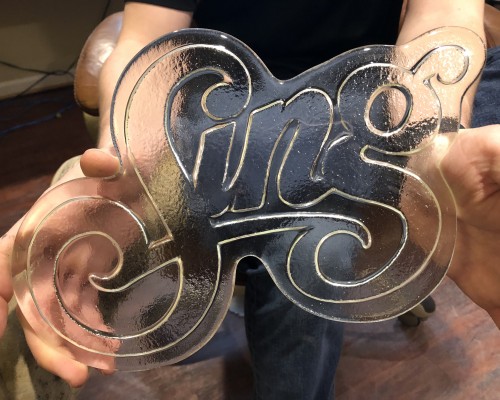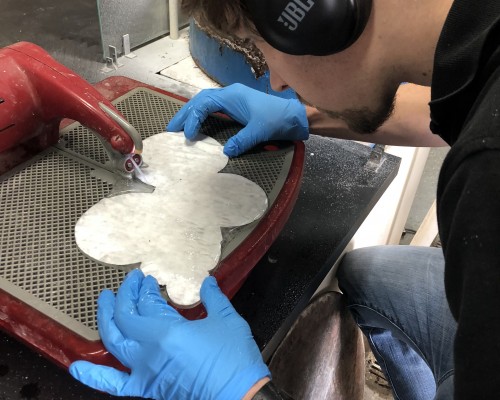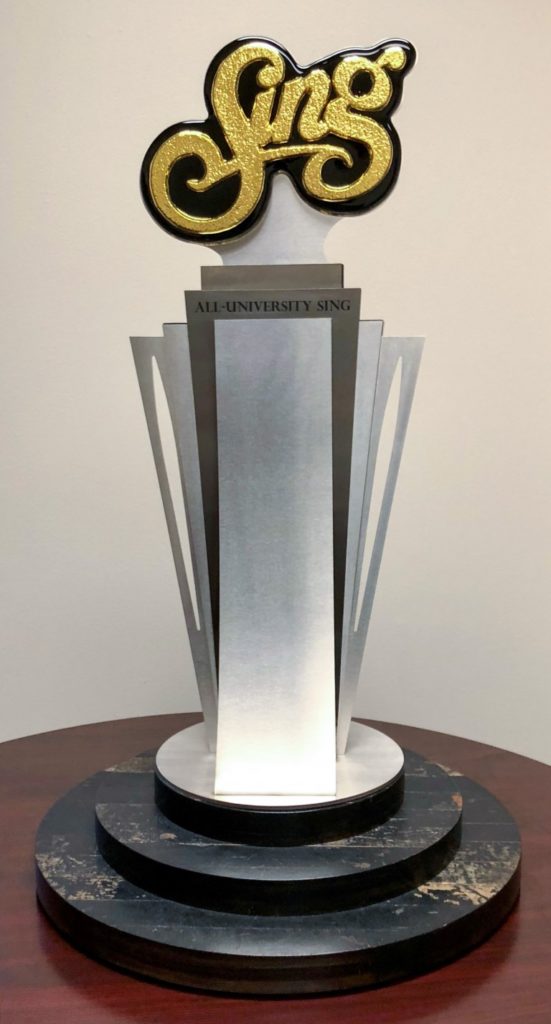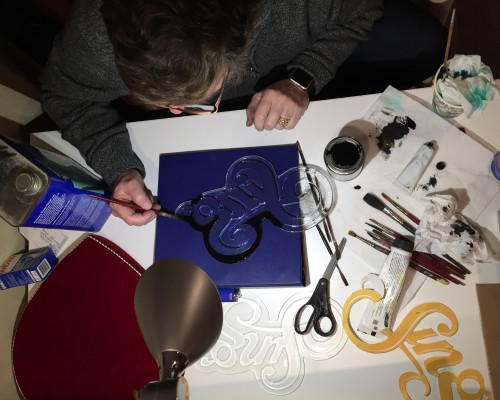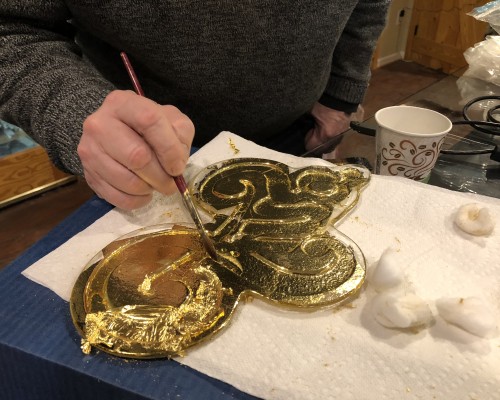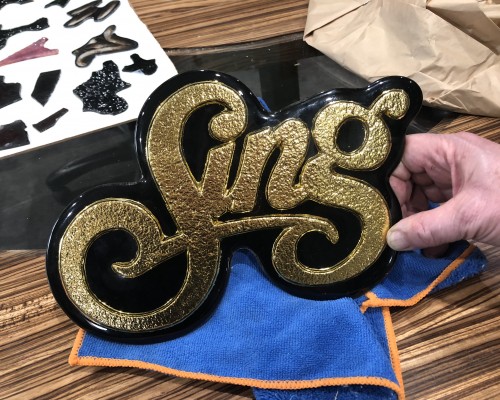Baylor University Sing is a spectacular show that is put on by the fraternities and sororities of Baylor and resembles a full out Broadway production. There are choreographed numbers to themed music, live singing, beautifully painted backgrounds, as well as elaborate costumes and props. The winner of this competition receives a trophy as well as the opportunity to participate in Pigskin. There are thousands of students who come together to make this event possible and it truly is an amazing spectacle to watch!
This year (2018) Stanton Studios was honored to design and fabricate the trophy for this great event. The trophy will be used for this year’s Sing as well as the next few years, so we took great care in designing and creating this masterpiece.
Working closely with Baylor University, we created a trophy that would have real significance to Baylor and to the Sing competition. The base of the trophy was made by our wood shop with reclaimed wood from the old 1930’s Waco Hall stage, where Sing has been preformed for years. The metal welded to the base was fabricated by Cen-Tex Metals to create the large silvery middle of the trophy where the names of the winners will be listed. This connects to the beautiful glass “Sing” at the top of the trophy that has real 24 karat gold in the lettering. This part of the trophy took careful and tedious work from our glass shop.
Owner and designer, Bryant Stanton, worked closely with his son, Samuel, to create the glass top over the span of a few days, and it is really a fascinating process. Continue reading the rest of the blog to find out how they did it!
To create the beautiful glass piece with the Sing lettering, first Samuel cut the glass piece into the correct shape using the glass saw! To do this, he cut out the correct pattern that he needed on a piece of paper, and then glued it to a clear piece of glass. Then, using this pattern, Samuel went over to the glass saw and began the actual cutting of the glass!
The red glass saw works similarly to most other saws. However, unlike a traditional saw, it releases a stream of water to dampen the glass dust that is being released as the glass is cut. This process is slow and must be done precisely. Once Samuel had completely cut the glass to the proper shape and ground down the edges, the glued paper was removed so the next step could begin: the creation of the lettering in the glass.
Samuel used a template of just the lettering to trace and cut out the lettering onto a glass fiber-blanket. The glass was placed on top of the fiber-blanket in the kiln and melted. The result is the glass becoming liquified and molding around the fiber-blanket lettering. The newly shaped clear glass can be seen in the picture above! See how the imprint of the lettering protrudes from the clear glass?
Once the lettering had been slumped and created in the kiln, the gold was applied to the letters. Bryant Stanton, our owner and glass expert, was responsible for covering the glass with extremely thin gold strips called gold leaf. These strips are 24 karat gold pieces that are hammered into thin sheets.
The glass was first flooded with a special glue, and then the gold leaf was brushed onto the surface with a brush and stuck to the glass. This process is exceedingly difficult and tedious due to the fact that the gold leaf is extremely fragile and breaks apart easily. Also, the gold cannot be touched with anything other than the brush and the glue. The oils from hands or fingers would cause the gold leaf to stick to them and fall apart. Gold leaf is an extraordinarily fragile and thin substance, and takes a lot of patience and skill to be able to master. For this reason, our owner and designer, Bryant Stanton, handled the gold-leafing of this piece.
Bryant continued the process of flooding the lettering and applying the gold leaf for a couple of days until all of the gold lettering was completely covered and there were no cracks in the gold. Once the gold had stuck to the letters, all the excess gold leaf was removed from the outside borders. These borders were then painted black using special sign paint. In the first picture above, Bryant can be seen testing the paint on the glass and seeing how it looks.
The final picture on the far right is the finished product of the glass piece with the gold and paint completed.
The Stanton family workforce did a fantastic job of coming together and creating this masterpiece. Samuel and Bryant with the gorgeous glass piece, and Nathan by creating the base that it sits on! We’d also like to thank Cen-Tex Sheet Metal for their contribution to the project! This was a great group effort that really encompasses what Sing is all about. We hope the winners of the magnificent trophy enjoy it as much as we have enjoyed putting it together.
To see the winners of this year’s Baylor University Sing 2018, watch the Awards Ceremony by clicking the link below:
https://www.facebook.com/BaylorStudentActivities/videos/10156281699532369/

